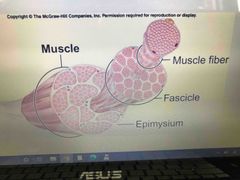![]()
![]()
![]()
Use LEFT and RIGHT arrow keys to navigate between flashcards;
Use UP and DOWN arrow keys to flip the card;
H to show hint;
A reads text to speech;
41 Cards in this Set
- Front
- Back
|
Origin of trapezius |
Spinous process of c1-t12 |
|
|
Insertions of trapezius |
Spine of scapula Acromion Lateral clavicle |
|
|
Action of trapezius |
(Lower fibers) depress scapula (Mid fibers) addiction scapula (Upper fibers) elevate scapula |
|
|
Origin of latissimus dorsi |
Spines if sacral, Lumbar Lower thoracic Iliac crest Lower 4 ribs |
|
|
Insertion of latissimus dorsi |
Intertubercular groove of the humerus |
|
|
Action of latissimus dorsi |
Extends, adducts, and rotates humerus medially, retracts shoulder. |
|
|
Origin of lavator scapulae |
Posterior tubercles of transverse process of c1-c4 |
|
|
Insertion of levator scapulae |
Superior part of vertebral border of scapula |
|
|
Action of levator scapulae |
Elevated scapula Tilts glenoid cavity inferiorly by rotating scapula |
|
|
Origin of rhomboid minor |
Inferior portion of nuchal ligament Spinous process of c7-t1 |
|
|
Insertion of rhomboid minor |
Vertebral border of scapula near or at the level of the spine |
|
|
Action of rhomboid minor |
Adducts scapula and rotates it to depress glenoid cavity. |
|
|
Origin of rhomboid major |
Spinous process of t2-t5 |
|
|
Insertion of rhomboid major |
Inferior aspect of vertebral border of the scapula to the inferior angle of the scapula. |
|
|
Action of rhomboid major |
Adducts scapula Rotates it to depress glenoid cavity |
|
|
Origin of erector spinae |
Posterior part of ilium |
|
|
Insertion of erector spinae |
T12-C2 and posterior skull |
|
|
Action of erector spinae |
Contraction of one side flexes the vertebral column laterally Contraction of both sides extends the vertebral column. |
|
|
Primary tissue type that makes up most skeletal muscles |
Skeletal muscle |
|
|
Characteristics of muscle tissue |
Excitability Contractability Elasticity Extensibility |
|
|
Another term for skeletal muscle cell |

Muscle fibers |
|
|
Five functions of muscle tissue |
Body movement Maintain of posture Temperature regulation Storage and regulation of materials Support |
|
|
Expansion of dense irregular connective tissue that binds together muscles, forms sheaths to distribute nerves, blood vessels, and lo lymphatic vessels, and to full spaces between muscles |
Deep fascia |
|
|
Tissue composed of areolar connective tissue and adipose . Separates muscle from the skin |
Superficial fascia |
|
|
Cord like structures that attach muscle to bone or skin or something |
Tendons |
|
|
Sheets of tissue that connect muscle to bone and stuff |
Aponeuroses |
|
|
Bands of connective tissue that hold tendons in place |
Retinacula (retinaculum-singular) |
|
|
Name of muscle attachment point that usually remains stationary |
Origin |
|
|
Part of muscle attachment that usually moves when muscle contracts |
Insertion |
|
|
Enlarged middle part of muscle |
Belly |
|
|
Muscle producing a particular movement |
Agonist, or prime mover |
|
|
Muscle whose action opposes that of another muscle |
Antagonist |
|
|
Muscle that assists prime movers in action |
Synergist |
|
|
Six ways muscles are named |
Muscle action Body regions Attachments Orientation Shape and size Heads/tendons of origin |
|
|
Muscles that have both origin and insertion on axial skeleton |
Axial muscles |
|
|
Three muscles of erector spinae |
I.L.S (I love spines) Iliocostalis Longissus Spinalis
|
|
|
Muscle that holds the lumber vertebrae erect |
Quadratics lumborum |
|
|
Origin of quadratics lumborum |
Iliac crest |
|
|
Origin of quadratics lumborum |
Iliac crest |
|
|
Insertion of quadratics lumborum |
Transverse process of lumber vertebrae and 12th rib |
|
|
Action of quadratics lumborum |
Contraction of one side produces lateral flexion, and contraction of both produces extension of spinal column |

